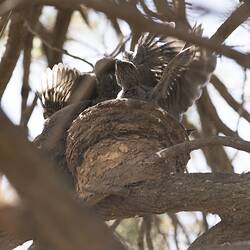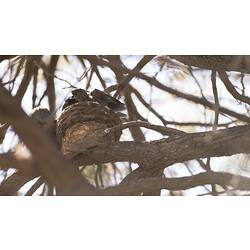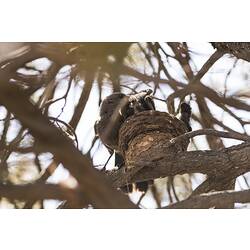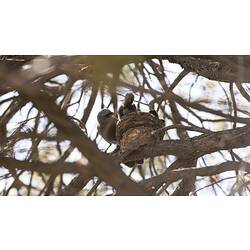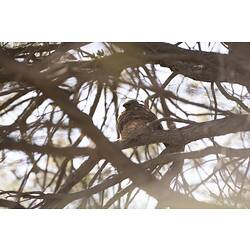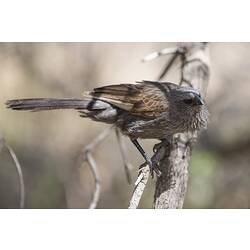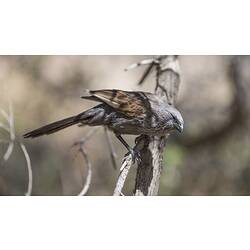General Description
A medium-sized dark grey bird with a short black bill, brown wings and a long black tail. Usually seen on the ground. Body size up to 33 cm.
Biology
Usually seen in groups of six to ten birds, and is usually seen on the ground. It eats seeds and vegetable matter, insects and other invertebrates, and sometimes small vertebrates. In autumn and winter, it will move to more open country where seeds become the more important part of its diet. Its call is a rough, scratchy, and discordant: 'ch-kew ch-kew'. It forms a 'breeding unit' - a dominant male and several females, plus immature birds that act as helpers. The nest is a large mud bowl, placed on a horizontal branch 3-20 m high, and reinforced and lined with grass. Usually only the adults incubate the eggs, but all members of a group assist with nest building and feeding of nestlings. More than one female may lay eggs in the same nest. While many eggs may be laid, usually only four nestlings will survive to fledge, with numbers possibly restricted by the size of the nest.
Distribution
Eastern Australia.
Habitat
Open dry forests and woodlands near water, but may also be found in farmlands with trees, along roadsides, in orchards and on golf courses.
More Information
-
Animal Type
-
Animal SubType
-
Brief Id
Medium-sized bird, dark grey with short strong black bill and black legs.
-
Colours
Grey, Black, Brown
-
Maximum Size
33 cm
-
Habitats
-
Diet
Omnivore
-
Diet Categories
Plants, Invertebrates
-
Endemicity
-
Commercial
No
-
Conservation Statuses
CITES: Not listed, FFG Threatened List: Vulnerable, EPBC Act 1999: Not Listed, IUCN Red List: Least Concern
-
Taxon Name
-
Common Name
Apostlebird
-
Kingdom
-
Phylum
-
Subphylum
-
Class
-
Order
-
Family
-
Genus
-
Species Name
cinerea



